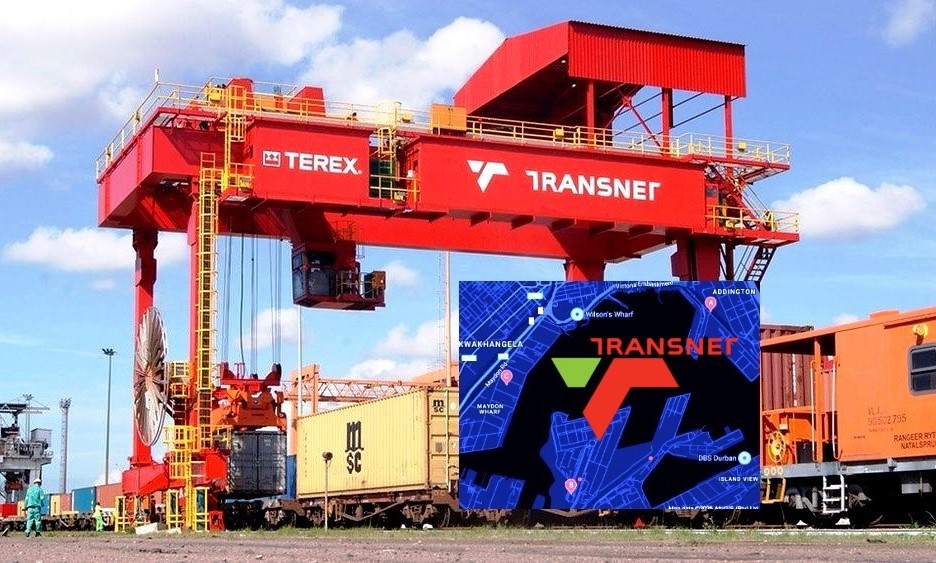Transnet’s Bold Move: A Game-Changing Overhaul for Durban Container Terminal and South Africa’s Ports
South Africa’s trade hub, Durban Container Terminal (DCT), is set for a major overhaul with over 100 new cargo-handling machines rolling in through 2025, backed by Transnet’s ZAR3.4 billion recovery plan. From eco-friendly straddle carriers to towering ship-to-shore cranes, this upgrade targets the port’s notorious bottlenecks. Handling 60% of national container traffic, DCT’s revival could ripple across the economy—provided the execution matches the ambition.
RAILWAY TRANSPORTATIONLOGISTICS
Phillemon Neluvhalani
3/6/20254 min read


Picture the Durban Container Terminal (DCT) as South Africa’s economic lifeline—a bustling hub where ships unload everything from electronics to coffee beans, keeping businesses humming and shelves stocked. But for years, this lifeline has been fraying. Equipment breakdowns, delays, and inefficiencies have turned what should be a smooth gateway into a frustrating bottleneck. Now, Transnet, the state-owned company running South Africa’s ports, is stepping up with a massive plan to turn things around. At the heart of this transformation? A ZAR3.4 billion ($200 million-plus) investment to revamp DCT with over 100 pieces of cutting-edge cargo-handling equipment. This isn’t just a facelift—it’s a bold bid to restore confidence in South Africa’s supply chain and reclaim its spot on the global trade map.
A ZAR3.4 Billion Boost to Tackle Inefficiencies
As part of its ambitious Recovery Plan, Transnet Port Terminals (TPT) is pouring ZAR3.4 billion into upgrading DCT, the country’s busiest container terminal. The rollout kicked off in December 2024 and will stretch through May 2025, delivering a fleet of new equipment designed to boost productivity, slash downtime, and fix the operational woes that have plagued the port. Here’s what’s hitting the docks:
20 straddle carriers for Pier 2: These towering, spider-like machines zip around the yard, moving containers with speed and precision.
9 rubber-tyred gantry cranes (RTGs) for Pier 1: Mobile cranes that stack containers like giant Lego blocks, maximizing space and efficiency.
4 ship-to-shore cranes for the South Quay: The heavy hitters that unload massive vessels, arriving between April and December 2025.
40 haulers and 67 trailers: The unsung heroes ensuring containers flow seamlessly across the terminal.
This isn’t just about replacing old gear. It’s a strategic upgrade to address chronic issues—think rusty cranes stalling mid-lift or trucks waiting hours to load. DCT handles a staggering 60% of South Africa’s container traffic, processing 2.35 million TEUs (twenty-foot equivalent units) in the 2023/24 financial year alone—1.7 million at Pier 2 and 650,000 at Pier 1. When it falters, the whole economy feels the pinch.
Leadership Signals a Turning Point
Transnet’s top brass aren’t mincing words about what this means. At the launch event, Board Chairperson Andile Sangqu laid it out plainly: “Our recovery hinges on directly addressing the challenges that led to the decline in our performance. Investments like this one lay the foundation for a more efficient and dependable Transnet.” He didn’t stop there, stressing collaboration as a cornerstone: “Recognizing that partnership is vital, we appreciate opportunities to work with the private sector in upgrading our port infrastructure.”
This comes after years of struggle for Transnet—equipment failures, labor disputes, and a reputation for delays have taken their toll. But with this investment, Sangqu sees a chance to rewrite the story, not just for DCT but for South Africa’s role in global trade.
Going Green While Boosting Efficiency
Transnet isn’t just chasing speed—they’re eyeing sustainability too. The new equipment includes diesel-electric hybrids, greenlit by the Environmental Protection Agency. These machines cut emissions while packing a punch with higher stacking capacity than their pre-2025 predecessors. It’s a win-win: a lower carbon footprint and a smarter use of terminal space.
Group Chief Executive Michelle Phillips drove the point home: “In line with our measures to reduce our carbon footprint, we’ve opted for diesel-electric hybrids. This equipment isn’t just sustainable—it outperforms anything we’ve had before 2025.” It’s a nod to global trends where ports like Rotterdam and Singapore are going green, and a signal that South Africa wants to keep pace.
Beyond Durban: A Nationwide Modernization Push
DCT might be the star of the show, but Transnet’s vision spans the coast. Other key terminals are slated for upgrades:
Port Elizabeth: 12 straddle carriers arriving in 2026.
Cape Town: 28 RTGs and straddle carriers to bolster capacity.
This coast-to-coast effort underscores Transnet’s determination to modernize its entire port network, ensuring South Africa can handle growing trade volumes without breaking a sweat.
Rebuilding Trust After a Rough Patch
Let’s not sugarcoat it—South Africa’s ports have been in the doldrums. The World Bank’s 2023 Container Port Performance Index (CPPI) was a brutal wake-up call: Durban ranked 398 out of 405 ports worldwide. Port Elizabeth hit 391, Ngqura 404, and Cape Town brought up the rear at 405. That’s not just bad—it’s a flashing red light for a country that depends on maritime trade for economic survival.
Transnet’s faced its share of heat too—inefficiencies, financial strain, and whispers of corruption have eroded trust. But this ZAR3.4 billion injection, part of a broader ZAR18.85 billion government-guaranteed loan, shows they’re not sitting idle. Industry voices are taking note. Capt. Salvatore Sarno of MSC, a global shipping giant, recently said he’s got faith in South Africa’s port workforce—if the infrastructure catches up. This upgrade might just be the shot in the arm they need.
What’s in It for South Africa?
So, why should you care? If you’re a small business owner waiting on raw materials, a retailer stocking shelves, or just someone who ordered a gadget online, this matters. Smoother port operations could mean fewer delays, lower shipping costs, and a more reliable supply chain. For exporters, it’s about getting goods—like South Africa’s famed wines or minerals—to markets faster. And for the economy? It’s a chance to shed the “unreliable” label and attract more trade.
Take a real-world example: in 2023, shipping delays at DCT cost businesses millions, with some importers rerouting to ports like Maputo in Mozambique. This upgrade aims to bring that business back home.
Challenges Ahead, But Hope on the Horizon
It’s not all smooth sailing yet. Rolling out 100+ pieces of equipment is one thing—keeping them humming is another. Transnet will need robust maintenance plans and skilled workers to make this stick. Past promises have stumbled over execution, so skepticism lingers. But the intent is clear, and the stakes are high. South Africa’s trade volumes are climbing—DCT alone saw a 5% uptick in TEUs from 2022 to 2023—and modern ports are non-negotiable.
A New Chapter for South Africa’s Ports?
Transnet’s massive overhaul of Durban Container Terminal is more than an equipment drop—it’s a lifeline for a struggling port system. If they pull it off, this could mark the dawn of a new era where South Africa’s ports aren’t the punchline of global trade rankings but a model of efficiency and reliability. For shippers, businesses, and everyday South Africans, it’s a glimmer of hope—and a sign that Transnet’s ready to fight for its place on the world stage. The ships are coming; now, DCT’s gearing up to meet them head-on.
Future
© 2024. All rights reserved.
